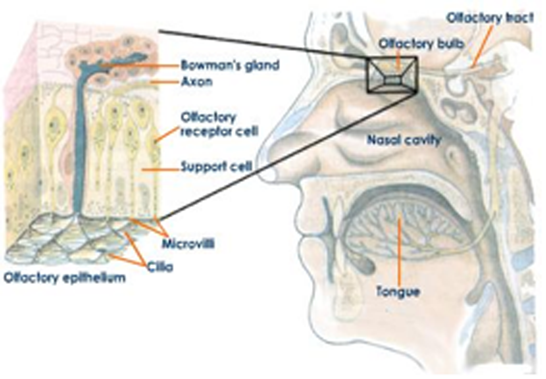Nuisance Odors
Odors can be both pleasant as well as unpleasant and we know that some odors indicate a potentially hazardous environment and others do not. Unfamiliar odors, however, can often cause people to suspect that they are being exposed to something harmful. Because of the subjective nature of odor perception, the regulation of odors and settling of odor complaints is difficult and often becomes litigious.
Skalsky & Associates has experience in litigation involving odors caused by a wide range of materials (diesel exhaust, sewer gas, tobacco smoke, xylene, acetone, styrene, cooking exhaust, and the combustion products of liquefied petroleum gas). It has been our experience, that “odors of concern” are generally transient in nature and often unpredictable in their occurrence.
The ability to perceive an odor varies widely among individuals. Likewise, being able to identify or describe an odor depends on an individual’s past experiences. These experiences often govern whether an odor is perceived in a negative (to be avoided) fashion or a positive (to be approached) fashion. The more odor-aware that an individual is, the more likely they are to be affected (negatively or positively) by a strong or unexpected odor. The processing of olfactory information is a basic factor of our biology and can elicit strong emotional responses.
An odorant is a substance capable of eliciting and olfactory response. It is generally believed that an odorant is an airborne chemical that binds to protein receptors on the membranes of our olfactory cilia. It is believed that it is the physical binding of the odorant to the receptor that creates an impulse in the olfactory nerve fibers. Receptor sensitivity may explain some of the variation in detection thresholds exhibited in the human population. It may also be responsible for the process of odor adaptation and odor fatigue.
Odor is the sensation that results from the neural stimulation caused by the binding of the odorant to the protein receptor. Identification of and response to an odor, is a learned behavior. It takes practice to discriminate and verbalize what an odor smells like or when a particular odor is present. Usually the term odor threshold is used to mean detection threshold, which identifies the presence of an odor without specific identification of the odor. At the detection threshold, you know that “something” is in the air but you cannot pinpoint what it is. The recognition threshold on the other hand, is the concentration of odorant that you are able to identify the smell.
When we become aware of an odor, it is the result of a complex interaction between an odor stimulus (volatile chemical) and receptor cells in our olfactory epithelium. When our olfactory epithelium (nose) is exposed to trace quantities of a volatile chemical such as ethyl butyrate, our brain recognizes a tutti-frutti odor or Juicy Fruit Gum flavor.
We are also able to identify more complex airborne chemicals which have both a gaseous and particulate component.
The concentration gradient of an odor begins at a sub-threshold. That means the odorant/chemical is present but is not being perceived. As the concentration of the odorant increases the detection threshold is reached. At a higher concentration, the recognition threshold is attained.
As the concentration of the odorant is increased the annoyance threshold is realized. This is the concentration where physical symptoms often occur. The most commonly reported odor related symptoms are headaches, irritated eyes, irritated throat, and nausea.
We have found that an odor event log can be extremely valuable in understanding causation and eventually identifying the “odors of concern” that might be present in a particular environment.
To make an initial identification of the chemicals causing the odor, we recommend the use of summa canisters to provide grab samples at “nose height” during an odor event. These samples can then be analyzed according to EPA Method TO15 which is a Gas Chromatography/Mass Spectrometry (GC/MS) analysis for the measurement of subsets of the 97 volatile organic compounds (VOCs) that are included in the 189 hazardous air pollutants (HAPs) listed in Title III of the Clean Air Act Amendments of 1990. This analysis includes most of the VOCs regulated by CalOSHA. Through a computer assisted analysis of the Tentatively Identified Compounds (TICs), the TO15 method can be extended to all peaks detected by the GC/MS methodology.
Even with the very subjective nature of odor perception, State and local regulation involving odor abatement requirements is moving forward. Skalsky & Associates has experience in both sensory and instrumental techniques for measuring odors and can assist in finding solutions to odor problems.

SKALSKY & ASSOCIATES
30 YEARS of Environmental & Industrial Health Services


